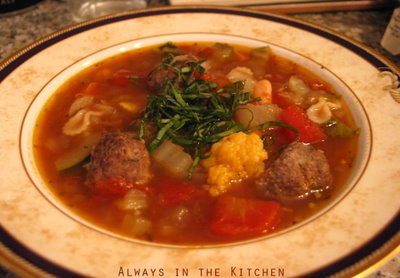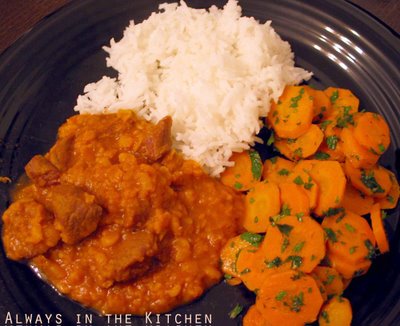 When the rain begins, and the weather starts to cool, my mind wanders inevitably to sausages. Particularly, I must confess, the wonderful specialty sausages from Oyama Sausage down at Granville Island Market. I never know exactly what they will have available, each day, although there are certainly some frequent flyers, but I know that there will be a variety of fresh and cured sausages that will include, but not be limited to chicken, pork, lamb, beef, and a variety of game meats. Perhaps my favourite is the venison and blueberry, although competition is steep, and the chourice sitting in my freezer right now is looking mighty attractive. They don't use fillers (unless, as with black pudding, it is an essential part of the recipe), and they don't use more fat than is needful. Every sausage that I have had from there has been outright delicious. Sausage need neither be unhealthful nor frightening in the making, famous sayings notwithstanding.
When the rain begins, and the weather starts to cool, my mind wanders inevitably to sausages. Particularly, I must confess, the wonderful specialty sausages from Oyama Sausage down at Granville Island Market. I never know exactly what they will have available, each day, although there are certainly some frequent flyers, but I know that there will be a variety of fresh and cured sausages that will include, but not be limited to chicken, pork, lamb, beef, and a variety of game meats. Perhaps my favourite is the venison and blueberry, although competition is steep, and the chourice sitting in my freezer right now is looking mighty attractive. They don't use fillers (unless, as with black pudding, it is an essential part of the recipe), and they don't use more fat than is needful. Every sausage that I have had from there has been outright delicious. Sausage need neither be unhealthful nor frightening in the making, famous sayings notwithstanding.Bangers and mash, that great classic comfort foods of British cookery, is one of the most straight-forward way to enjoy a good sausage, and I certainly do. I also borrow scraps from other european cuisines, though. Sausage with lentils and red wine, as the Italians would do. Cassoulet, as the French are prone to just about get into fist-fights over. Grilled beside a heap of red cabbage and apples, and buttery egg noodles, which would go down well in Germany or Scandinavia.
These are just beginnings. The possibilities, when you are starting with a good sausage, are just about endless. Breakfast hashes, stuffed into a good bun for lunch, or cut into coins and tossed with pasta for dinner. Jambalaya. Paella. Assorted casseroles and composed dishes. Heck, a nice, plump pork sausage next to a big bowl of homemade baked beans would be just fine, thanks.
A bit of onion, a bit of mushroom, and, as above, you have the beginnings of a sausage and gravy dinner that can feature any side dishes you like: scalloped potatoes, steamed broccoli, giant pile of coleslaw... really, whatever is in the fridge will likely go well with sausage.
When the weather starts to cool and the days are starting to grey with rain, this is what I want on my plate.
There are warm-weather sausage dishes, too, of course
















